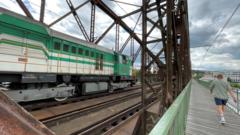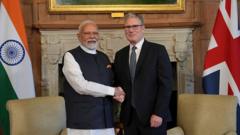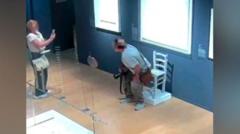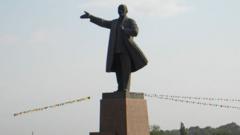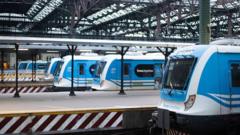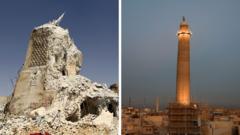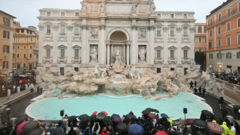The Vysehrad railway bridge in Prague, a historic structure dating back 123 years, is at the center of a heated debate as plans to replace and relocate the bridge have sparked widespread criticism. Renowned for its unique architectural significance, the bridge draws passionate arguments from both preservationists and transport authorities, highlighting the ongoing struggle between maintaining cultural heritage and adapting to modern infrastructure needs.
Architect and bridge engineer Petr Tej, a member of the Vysehrad Bridge Foundation, passionately defends the bridge's importance to Prague's identity. "The panorama this bridge creates alongside the Vysehrad fortress rivals that of the Charles Bridge with Prague Castle," he asserts. The 1902 structure, emblematic of Czech industrial prowess during the Austro-Hungarian Empire, would be lost if torn down, according to its supporters.
Recent claims from the Railway Authority suggest that the bridge's condition poses severe limitations on its capacity, only operating at 60% efficiency due to corrosion. Pavel Paidar, Director of the Railway Authority's Construction Preparation Department, emphasizes the need for an updated structure to accommodate projected increases in rail traffic. Proposed plans for a new bridge include additional tracks and enhancements to the overall transport network.
The Vysehrad Bridge Foundation contends that the bridge could be effectively restored, minimizing disruption and preserving historical values. Their proposals, supported by over 25,000 residents, suggest that only a fraction of the original steel requires replacement—a stark contrast to the Railway Authority's estimates. Even UNESCO has publicly backed calls for restoration rather than demolition.
Amidst the discourse, there are mounting concerns regarding the plan to relocate the old bridge to Modrany as a pedestrian and cyclist crossing. Critics argue that this would undermine the historical context of the bridge and would appear out of place in the new location. They propose a more sympathetic approach to handle both transport needs and heritage conservation.
As debates rage on, the Czech government will ultimately have to make the defining decision—whether to preserve an architectural landmark or pursue modernization at the cost of history. The clash of interests exemplifies a broader, global conversation surrounding how societies grapple with preserving their cultural heritage while evolving to meet contemporary demands.
Architect and bridge engineer Petr Tej, a member of the Vysehrad Bridge Foundation, passionately defends the bridge's importance to Prague's identity. "The panorama this bridge creates alongside the Vysehrad fortress rivals that of the Charles Bridge with Prague Castle," he asserts. The 1902 structure, emblematic of Czech industrial prowess during the Austro-Hungarian Empire, would be lost if torn down, according to its supporters.
Recent claims from the Railway Authority suggest that the bridge's condition poses severe limitations on its capacity, only operating at 60% efficiency due to corrosion. Pavel Paidar, Director of the Railway Authority's Construction Preparation Department, emphasizes the need for an updated structure to accommodate projected increases in rail traffic. Proposed plans for a new bridge include additional tracks and enhancements to the overall transport network.
The Vysehrad Bridge Foundation contends that the bridge could be effectively restored, minimizing disruption and preserving historical values. Their proposals, supported by over 25,000 residents, suggest that only a fraction of the original steel requires replacement—a stark contrast to the Railway Authority's estimates. Even UNESCO has publicly backed calls for restoration rather than demolition.
Amidst the discourse, there are mounting concerns regarding the plan to relocate the old bridge to Modrany as a pedestrian and cyclist crossing. Critics argue that this would undermine the historical context of the bridge and would appear out of place in the new location. They propose a more sympathetic approach to handle both transport needs and heritage conservation.
As debates rage on, the Czech government will ultimately have to make the defining decision—whether to preserve an architectural landmark or pursue modernization at the cost of history. The clash of interests exemplifies a broader, global conversation surrounding how societies grapple with preserving their cultural heritage while evolving to meet contemporary demands.

